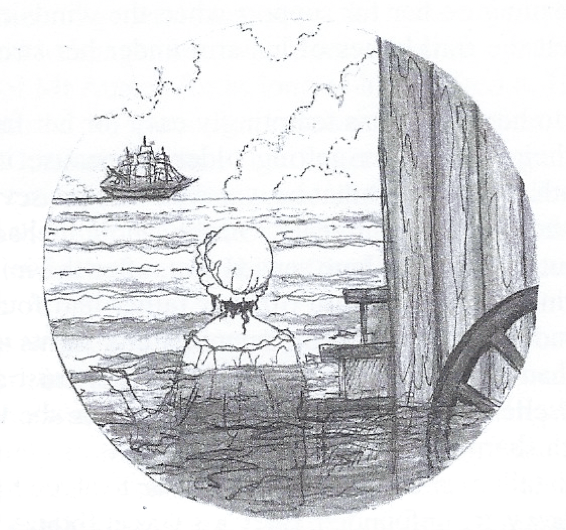Jane Austen's final and uncompleted novel, Sanditon, poses an intriguing question:
Why would a dying woman choose to write about a seaside resort for hypochondriacs?
The Lonely Shore attempts to answer that question, bringing to life Jane's doomed holiday romance at Sidmouth when she was twenty-five and her subsequent holidays with her parents at Lyme. It suggests the motivation behind her invention of a seaside place of her own in Sanditon, while landlocked at Chawton Cottage in Hampshire during her final illness.
The book examines the growth during Jane Austen's lifetime of the seaside resort, with the twin benefits of health and society. The Austen family is shown enjoying the varied entertainments available on a coastal holiday in the Regency period. Jane's experience of sea-bathing at Lyme, described by her in a letter of September 1804 to Cassandra, is recreated, together with a possible inspiration for the dramatic scene in Persuasion that unfolds on the Cobb.
The Lonely Shore examines Jane's relationships with her two sailor brothers Frank and Charles, and the influence these had on characters such as William Price in Mansfield Park, and Captains Wentworth, Harville and Benwick and Admiral and Mrs Croft in Persuasion. Jane's admiration of the men of the British navy at the time of Trafalgar and the impact of her three years living in the port town of Southampton are discussed in the contexts of her family life and the development of her writing. Jane Austen's knowledge of the slave trade and the impact of her subversive attack against it in Mansfield Park are explored in detail.
The influence of the Romantic movement on Jane Austen's writing is linked to her skill in her later novels at matching the emotions of characters to their natural surroundings. Anne Elliot is rejuvenated by her visit to Lyme, Fanny Price survives exile in Portsmouth by health-giving strolls on the ramparts and Charlotte Heywood looks out of her bedroom window, full of anticipation upon her arrival at Sanditon 'to the sea, dancing and sparkling in sunshine and freshness'. The Lonely Shore suggests that Jane Austen's writing underwent a sea-change following her experience of the English coast; her own unique response to the lure of the sea proving just as vivid and memorable as anything produced by her male contemporaries, Byron, Wordsworth or Coleridge:
'They went to the sands to watch the flowing of the tide, which a fine south-easterly breeze was bringing in with all the grandeur which so flat a shore admitted. They praised the morning; gloried in the sea; sympathised in the delight of the fresh-feeling breeze.' - (Persuasion)

An extract and illustration taken from The Lonely Shore - Jane Austen and the Sea.
When they first arrived, and the sea still held a vestige of late summer warmth, she had bathed several times and enjoyed it immensely. It always took some determination to inch her way down the steps from the hut into the icy green swell and she had to steel herself to do it. But once her skin became accustomed to the coldness of the water she was full of the rare exhilaration of being at one with the elements. The only sounds were her own breathing, the raucous cries of the gulls and the breaking of the waves on the shore behind her. She would gaze down into the depths, the water shifting in colour between a sombre greyish-green in the shadows to a brilliantly translucent turquoise where the sunlight danced upon it. She became mesmerized by the patterns on the sand beneath her white, corpse-like feet; watching her gown swirl around her legs as the waves swelled and subsided. Occasional shoals of tiny fish zigzagged through the water, changing direction on a whim and moving all as one. This was the closest to heaven she had known - peace and solitude; the light, the water and the horizon all she required for companionship.
Recently published in July 2022.
Jane in Winter, the second of
the Austen Chronicles.
Follow Jane Austen through successive winters and Christmases from the age of seven until her final Christmas at forty-one. This book imagines Jane's innermost feelings as she experiences childhood festivities and family theatricals; the trauma of leaving her old home for Bath and the loss of her beloved father; her first romance and a mortifying proposal; the frustrations of writer's block during exile in Bath and Southampton and her eventual fulfilment as a writer once she returns to rural Hampshire; the joys and irritations of family life and the enduring love and encouragement of her sister Cassandra.
